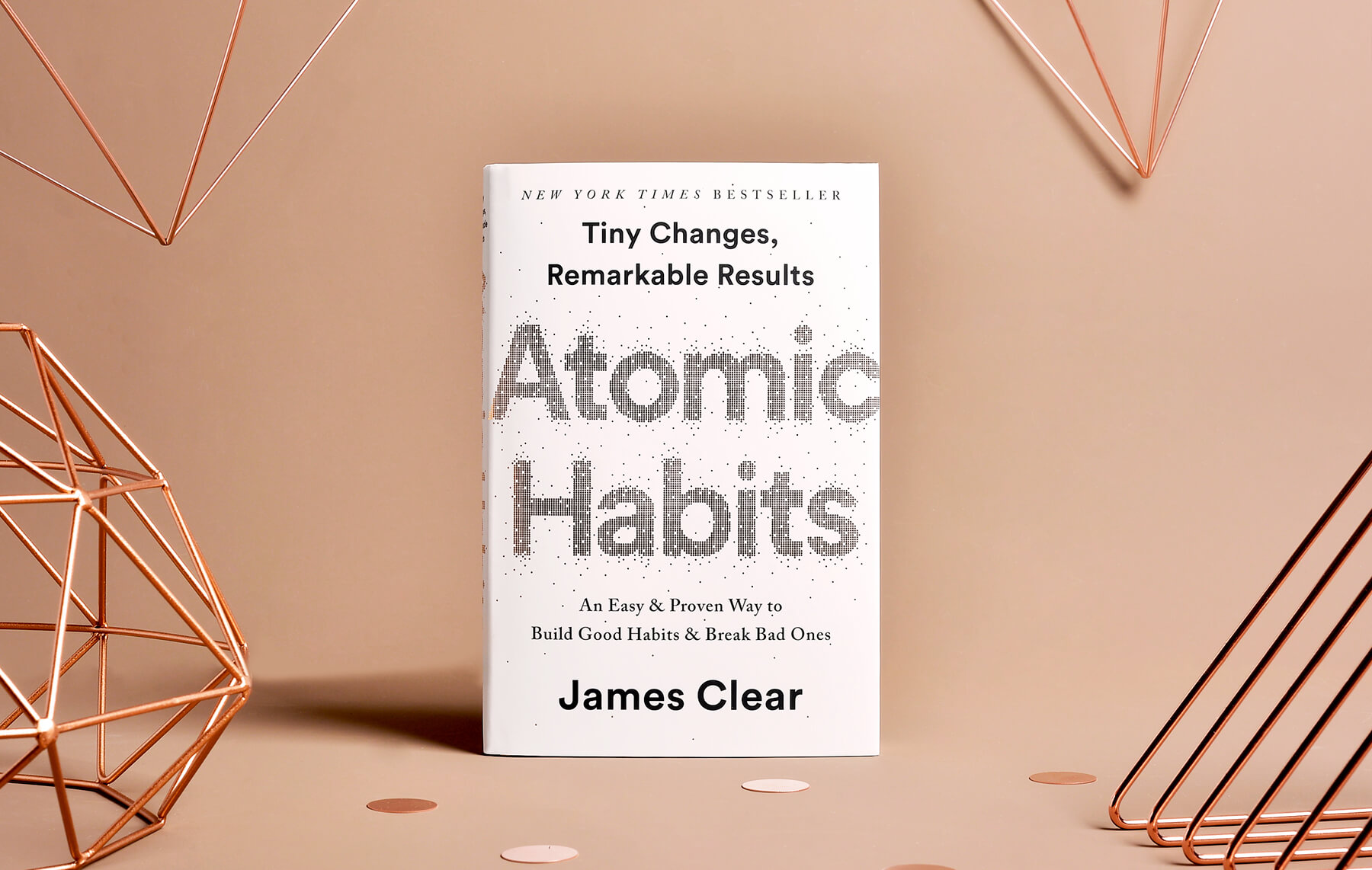
Atomic Habits:
Tiny Changes, Remarkable Results
⭐ Key Notes
⚛ Power of Atomic Habits
- Tiny changes in our habits can change the trajectory of our lives.
- It is the tiny improvements that create incredible change.
- Success is the product of daily habits – not once in a lifetime transformations.
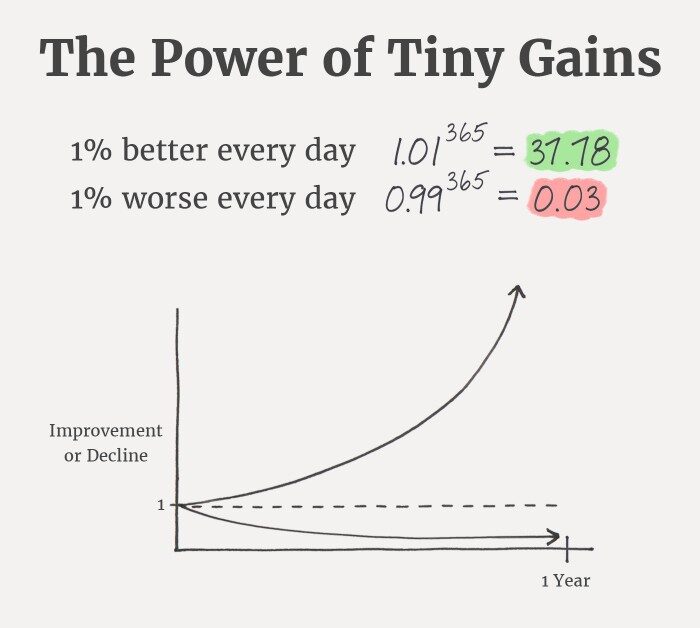
The valley of disappointment
- Progress is compounding, not linear.
- At the start, progress is extremely slow and small.
- Patience is required.
- The most powerful outcomes of any process are delayed.

Focus on systems
- A goal is a result that you wish to accomplish.
- Systems are the processes that lead to results.
- Goals are good for setting direction, but systems are best for making progress.
Layers of behaviour change
- Outcomes – what you get.
- Processes – what you do.
- Identity – what you believe.
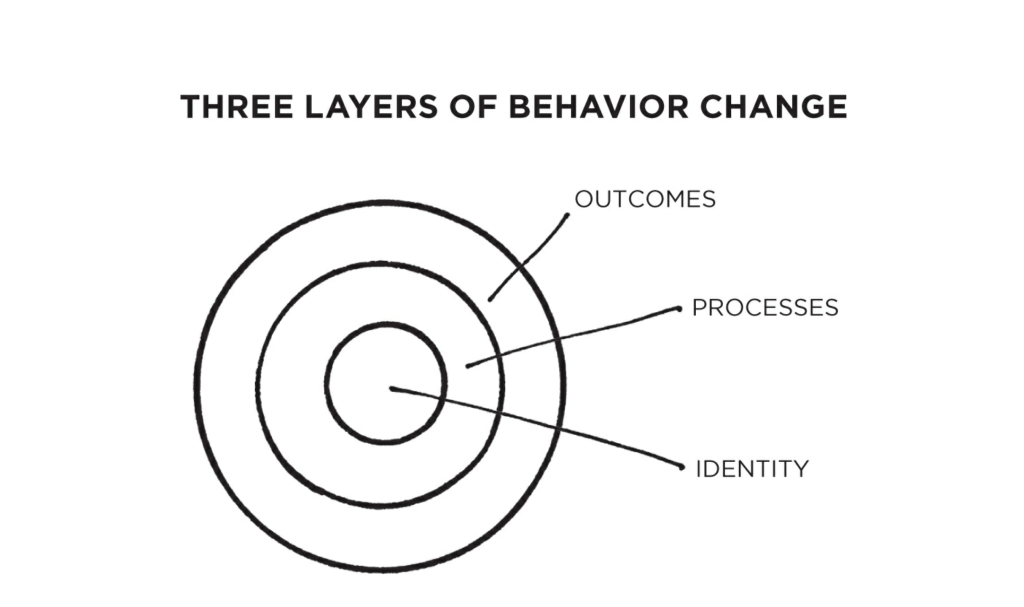
- Make it part of your identity and your behaviours will change.
- Do not say – I want to run a marathon. Say – I will become a runner.
- When you workout, you are an athelete.
- When you write code, you are a programmer.
➰ Habit Loop
- A habit is something that is repeated so many times that it becomes automatic.
- Over time, rewards become associated with cues.
- The key to habits, it to create a feedback loop that is continuosly improved.
- Cue – phone buzz.
- Craving – want to know who messaged.
- Response – pick up the phone.
- Reward – know who messaged.
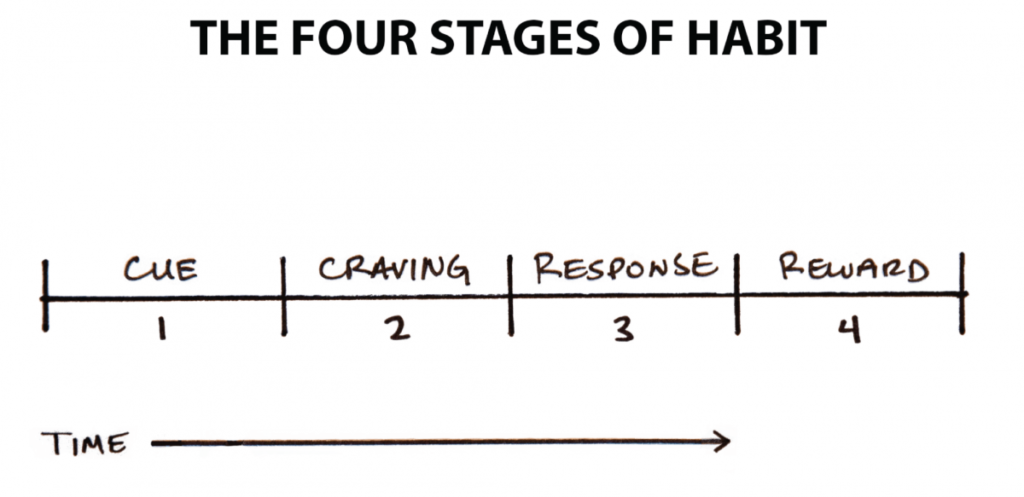
📝 Law 1: Make it Obvious
Habit scorecard
- Until you make the unconscious conscious, it will direct your life and you will call it fate.
- Most habits are so automatic, that we do not even notice them.
- Create a habit scorecard to observe daily life.
- Write down all your daily behaviours – from waking up to bedtime.
- Categorise each habit as positive, neutral, or negative.
- Observe your daily life.

Habit stacking
- Tie desired habits to existing habits.
- After [current habit], I will [new habit]
- After brushing my teeth, I will do 50 push-ups.
- A chain of habits is more likely to be sustained when practiced consistently.
- Choosing the correct trigger is essential. The trigger should be automatic.
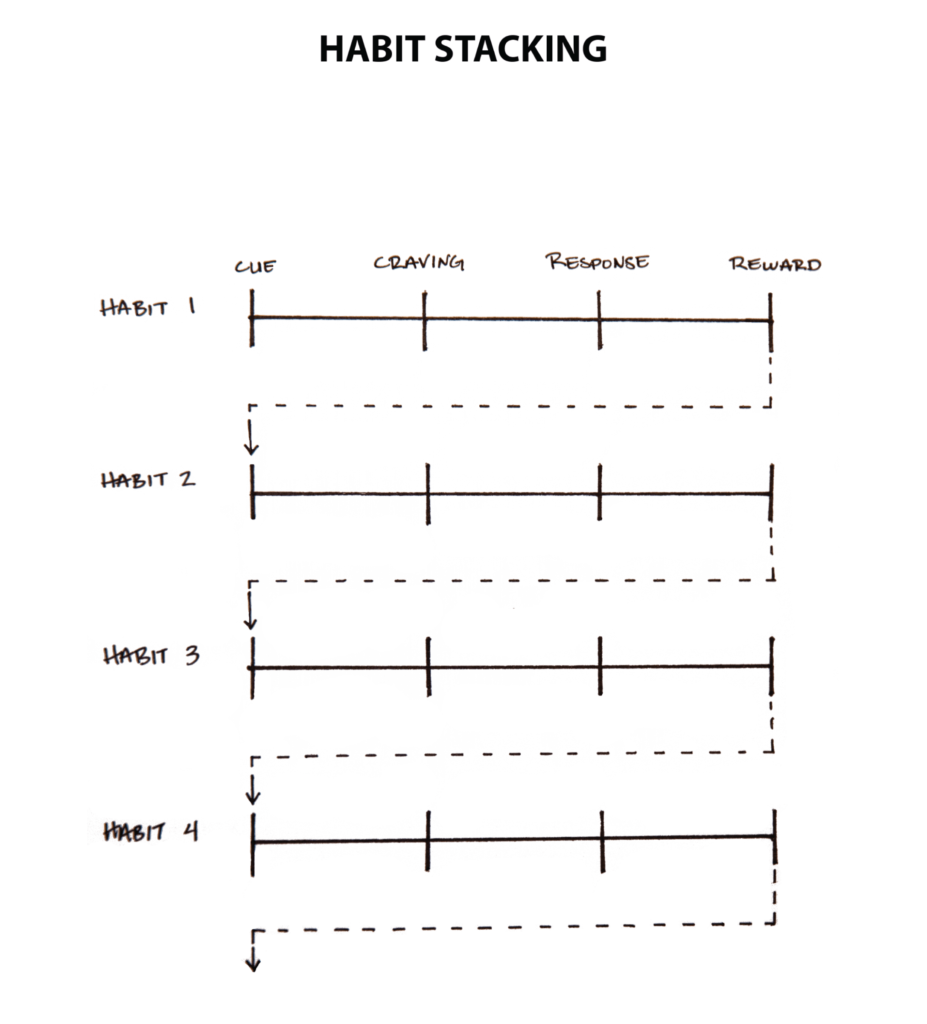
Define a time and place
- Define a time and a place.
- Clearly state your intention to act.
- I will [behaviour] at [time] in [location]
- I will read a book for 15 minutes, at 7pm in the bedroom.
Design your environment
- The environment shapes human behaviour.
- Make the cues visible and obvious.
- To drink more water – place water bottles everywhere.
- The same environment may create different cues for different people. For some, it may be a queue to read, whereas for others it may be a queue to watch TV.
- Make seperate zones in the hose for different activities.
- One space = one use.
- Make it invisible – to get off your phone, put it in another room.
😍 Law 2: Make it Attractive
Dopamine
- When we expect to be rewarded, we take action.
- The more rewarding an action, the more likely we are to repeat it until it becomes a habit.
- Our motivation levels are affected by dopamine.
- Dopamine is released when we expect pleasure.
- Gambling addicts experience a dopaine spike when they place the bet, not when they win.
- The anticipation of a vacation can be better than the vacation itself.
- It is the craving that causes us to take action.
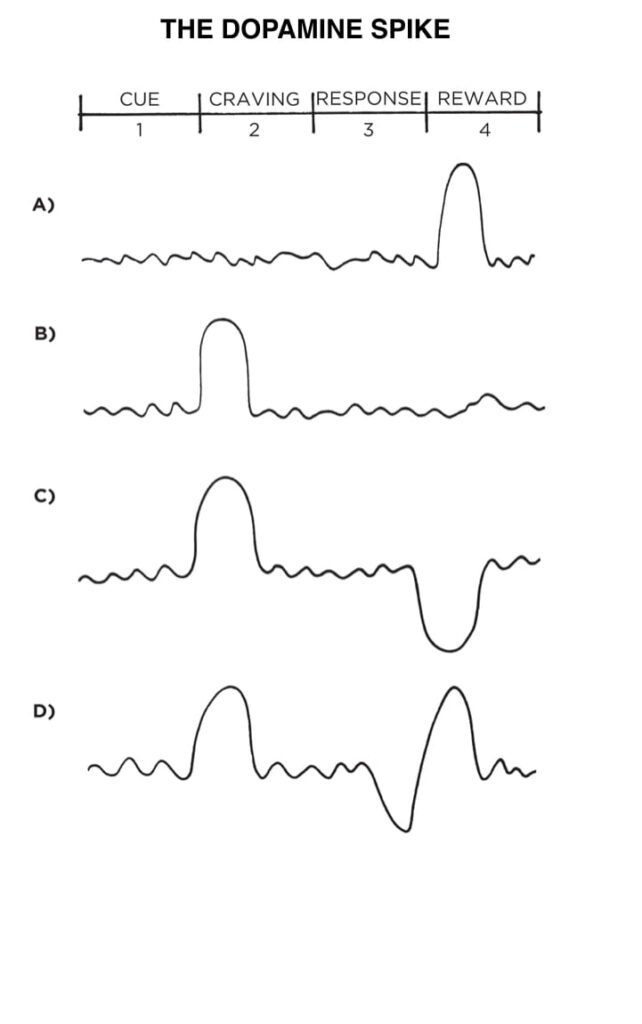
Temptation bundling
- Make a habit more attractive by combining a habit that we need to do, with habit that we want to do.
- Bundle watching TV with working out.
- Premack Principle – more probable behaviours will reinforce less probable behaviours.
Group influence
- Become part of a culture where that habit is the norm.
- To get in better shape – surround yourself with fit people.
- To read more – join a book club.
Understand your underlying motives
- Obtaining food and water.
- Conserving energy.
- Finding love and reproducing.
- Connecting and bonding with others.
- Winning social acceptance and approval.
- Reducing uncertainty.
- Achieving status and prestige.
Enjoy hard habits
- Associate your habits with positvie experience.
- Fitness = health and wellbeing, not fatigue.
- Cleaning house = environment conducive to peace and mind, not waste of time.
- Saving money = financial freedom, not sacrifice.
🌴 Law 3: Make it Easy
Law of least effort
- The more energy required, the less likely it is to happen.
- Eliminate any friction that makes the habit more difficult.
- Make your good habits convenient.
Prime the environment
- Automate your environment to reduce friction for later action.
- For the gym – lay out the clothes the night before.
- For breakfast – place pan and ingredients on the stove ahead of time.
2 minute rule
- Find a two minute version of your desired outcome.
- To run a marathon – put on running shoes and stretch.
- To read a book – read just one page.
⛓ Law 4: Make it Satisfying
Associate pleasure
- Pleasure encourages the brain to repeat the action.
- What is immediately rewarded is repeated.
- Add a little immediate pleasure to help sustain long-term habits.
Feel successful
- Use little wins.
- For each sales call – move a paperclip or marble from one jar to another.
- Visual measurements – logs, progress bars, habit trackers.
Habit tracking
- Make tracking a reward within itself.
Don’t break the chain
- Lost days hurt you more than successful days help.
- Create a daily chain and do everything to keep it going.
- If you normally do 50 pushups, just do 10 to keep the chain going.
- Use accountability partners – tell others about your habits, or give something away each time you break the chain.
🦸♂️ Action Plan
- Identify the positive habits that you want to develop.
- Identify the negative habits that you want to eliminate.
- Observe your current situation by using a habit scorecard to assess your daily routine.
- Create commitment – specify an action, time, and place.
- Prime your environment – remove friction and make the habit easily accessible.
- Increase dopaine during habit – eg listening to music whilst working out.
- Reframe your perspective – eg working out is energising, not fatiguing.
- Start easy by performing the habit for only 2 minutes initially.
- Focus on small, 1% improvements.
- Do not break the chain – consistency is king.
